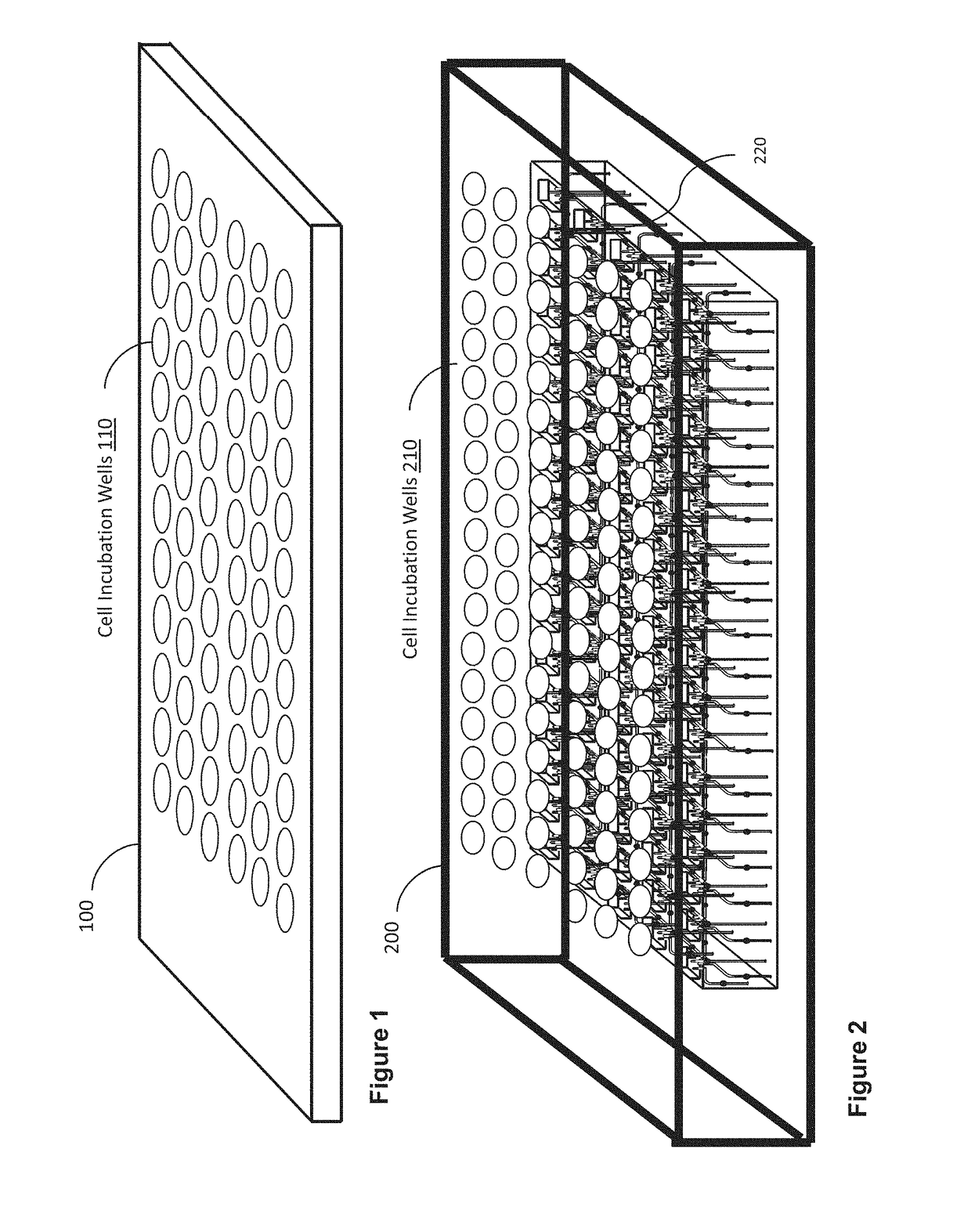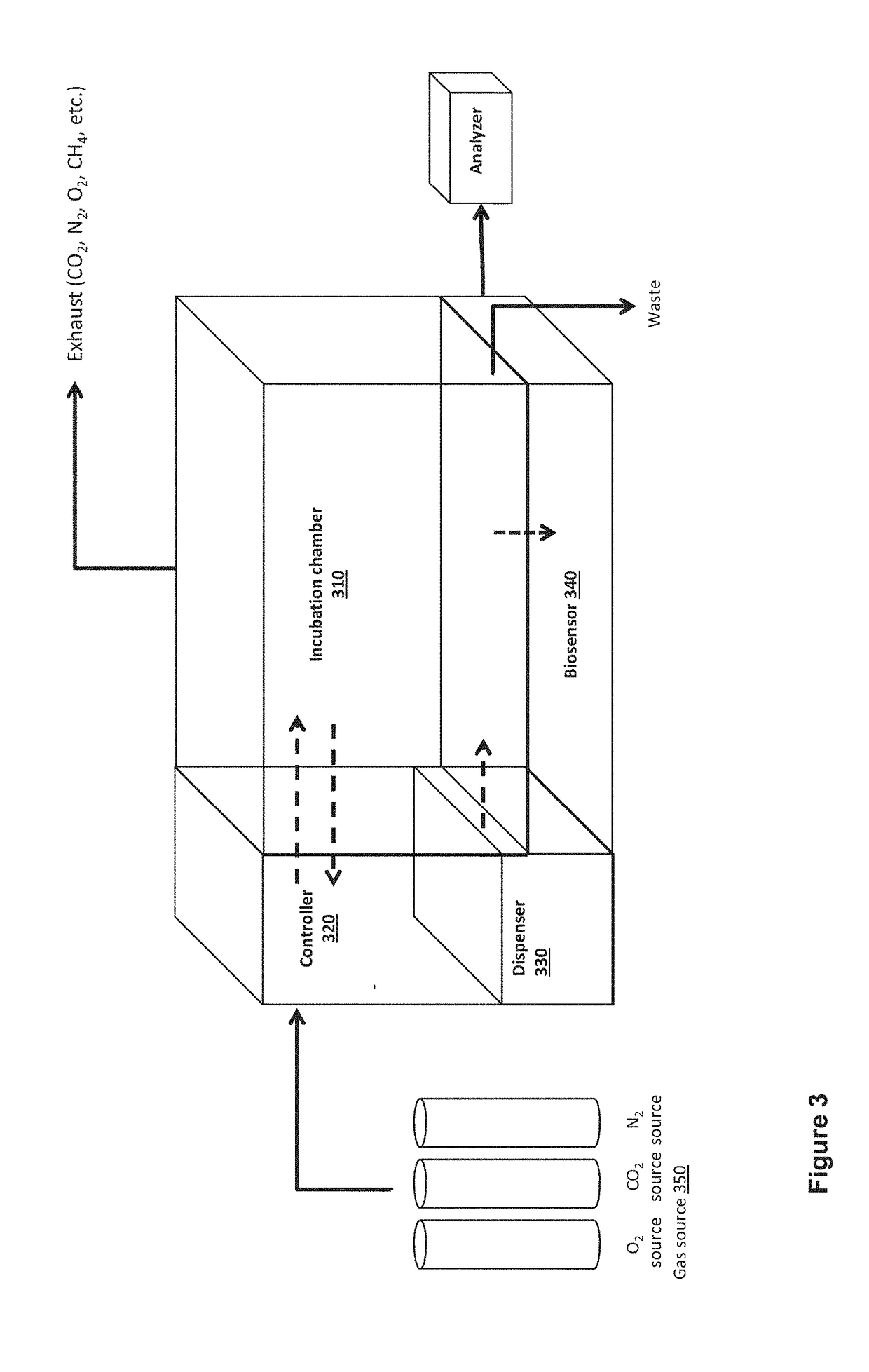Cap arrangements providing per-well fluidics and gas exchange for advanced microplate, microarray, and microtiter technologies
a technology of fluidics and gas exchange and cap arrangement, which is applied in the field of microprocessor-controlled microfluidic platform technologies, can solve the problems of discontinuing or disrupting the control cell nurturing condition, affecting the quality of microorganisms,
- Summary
- Abstract
- Description
- Claims
- Application Information
AI Technical Summary
Benefits of technology
Problems solved by technology
Method used
Image
Examples
example cell
[0175 Culture Requirements
[0176]To keep cell cultures alive outside of tissues, a number of environmental, nutrient, and sterility factors must be maintained. Additionally, in duce cell growth, hormones or growth factors must be provided. A few of these aspects are considered here in the context of various embodiments.
[0177]Temperature Control:
[0178]Temperature plays an important role in cell culture. For example, the length of bacteria, L. pneumophila serotype 1 strains AATCC33152, responded to variations in temperature over a range from 30.0° C. to 47.0° C. in 0.5 steps using a developed temperature gradient incubator [1]. Additionally, cells are able to survive at temperatures 10° C. to 20° C. below the core temperature, but they will immediately destruct if the temperature reaches 40° C. [2]. In general, in the cell biology field, the culture temperature is 37° C. (human body temperature). However, various cell types require other cell culture conditions. Typically controlled te...
example aim 1
[0447]
[0448]Determine if level of NO and time of NO exposure regulate the expression of iNOS and apoptosis.
[0449]An example working hypotheses is that long term of cells exposing to low concentration of exogenous nitric oxide causes a negative feedback mechanism inducing down regulation of iNOS and promotes tumor progression. As is well known, low NO concentration reduces apoptosis. Thus, low concentration of exogenous NO causes down regulation of iNOS resulting in a reduced ability to produce NO from iNOS. The lower level of NO resulting from down-regulated iNOS will prolong the lifetime of cancer cells. FIG. 42 summarized the relationship between NO exposure concentration and duration (control variables in the experiment) and cell survival time.
[0450]Due to in fact that NO levels are needed to regulate in low ranges, the experiment of this study requires in process measurement of NO concentrations during cell culture. Hence, an incubator embodiment provides the convenience, accura...
example experiment
[0463 Method Leveraging Various Embodiments
[0464]The main reagents are NO donor compounds, such as DEA / NO, DETA / NO, Sper / NO, PABA / NO, SNP, GTN, SNAP, and GSNO. An NO quantitative kit can be used to detect the concentration of NO. Cancer cell lines can be, for example, ovarian cancer cells such as OVCAR-3. The antibodies for such an experiment can employ, for example, iNOS rabbit poly-clonal and IgG 1: 1500. As described earlier, and MTT reagent can be used to analyze for cellular proliferation, for example using a microtiter-plate reader.
[0465]Ovarian cancer cell lines, OVCAR-3 can be cultured in RPMI medium 1640 (Life technologies, Gland Island, N.Y.) containing 10% FBS (HyClone) and 1% of penicillin-streptomycin. A gas mixture comprising 94% nitrogen, 5% carbon dioxide, and 1% oxygen can be used to create a hypoxia condition; and a gas mixture comprising 95% air with 5% carbon dioxide can be used to create a normoxia condition in humidified atmosphere. The cells can be placed in w...
PUM
 Login to View More
Login to View More Abstract
Description
Claims
Application Information
 Login to View More
Login to View More - R&D
- Intellectual Property
- Life Sciences
- Materials
- Tech Scout
- Unparalleled Data Quality
- Higher Quality Content
- 60% Fewer Hallucinations
Browse by: Latest US Patents, China's latest patents, Technical Efficacy Thesaurus, Application Domain, Technology Topic, Popular Technical Reports.
© 2025 PatSnap. All rights reserved.Legal|Privacy policy|Modern Slavery Act Transparency Statement|Sitemap|About US| Contact US: help@patsnap.com



